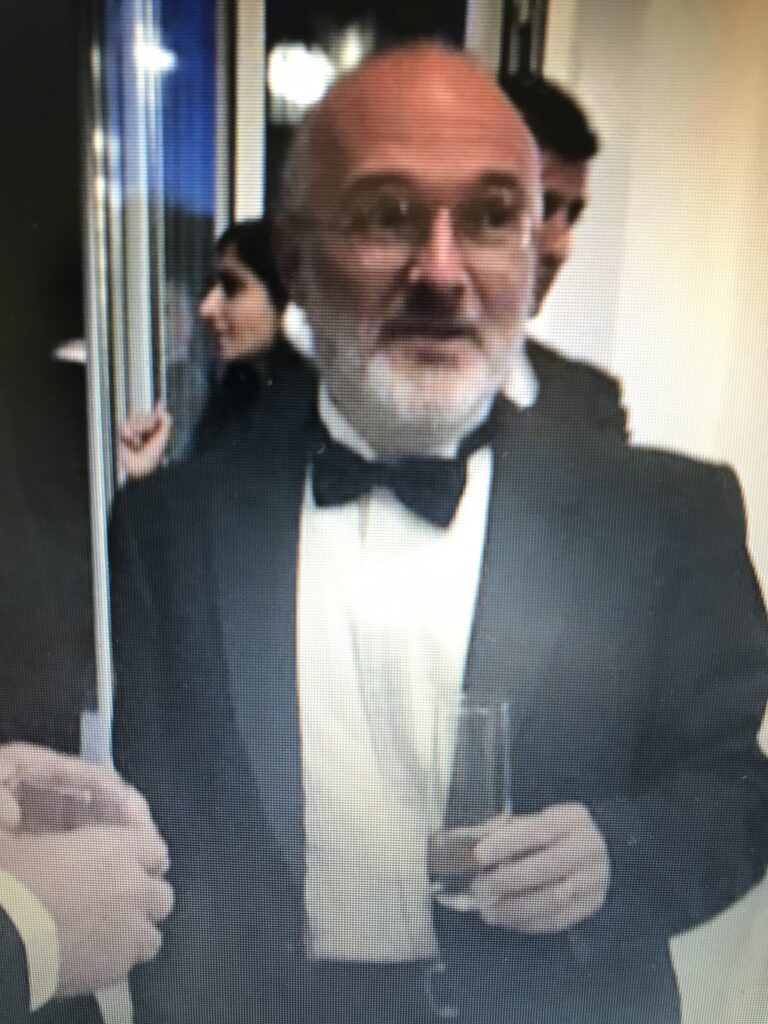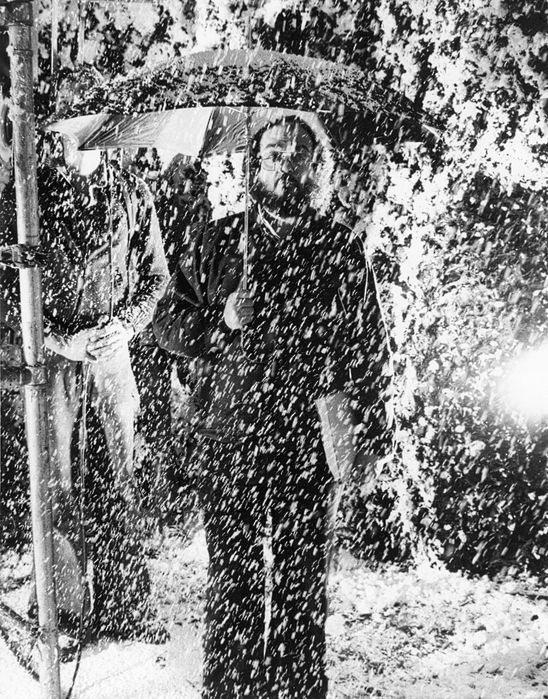BSC’s ‘BEST OF ENEMIES’ CRACKLES THROUGH AN ODYSSEY OF RACIAL TURBULENCE TO ULTIMATE CONCILIATION; HINDS, LLOYD SHINE IN THE LEADS
By DAN VALENTI
PLANET VALENTI Arts
(PITTSFIELD, Mass., THURSDAY, JULY 28, 2011) — QUESTION: Can the interpretation of a derivative work of an extrapolation of actual events match the power of the reality of the events themselves? Can Art top “real life”? ANSWER: It has to, or what you end up with is not Art but killing time.
Art has an enormous advantage over “reality,” a word that can only make full sense if we box it within quotation marks. The artist can select the components of life and fashion them compactly, so that their meaning can be articulated in a telescopic fashion. The best artists select the most significant elements of a situation or event to extract the essential messages. That’s what happens in Mark St. Germain’s new play, “The Best of Enemies,” now playing at the main stage of Barrington Stage Company, Union Street, here.
Adaptation is a ‘Hand Me Down’ Process
Saint Germain has telescoped several racially tense years into a compact, relentless 90 stage minutes. The playwright adapted Osha Gray Davidson’s novel of the same name, itself based events that took place in the late 60s and 1970s in Durham, N.C. — giving us an adaption of an extrapolation of a true story, a set of blueprints from which the director must then construct the flesh and blood of the play.
This “hand me down” process is why many writers stay away from TV, film, and the stage. This writer, THE PLANET, had a less than fulfilling stint in Hollywood in the late 1980s. As the movie producer tells Barton Fink in the film of the same name, “Fink, you’re not a writer. You’re a write off.”
Many scribes don’t want there work to function merely as a set of blueprints. They want the finished work to stand on its own. The script of a play can never do that. The script writer is never the king. A script is a set of directions that should come with the words, “Some assembly required.” The director is the parent at Christmas, trying to assemble the device from the instructions.
From Racial Animosity to Conciliation, in 90 Relentless Minutes
“Best of Enemies” focuses on the turbulent relationship between KKK Grand Cyclops C.P. Ellis and black activist Ann Atwater. In ninety minutes with no intermission, they go from “honky” and “nigger” to heartfelt friends. We know it didn’t happen that way in “real life” — it never does — and yet … and yet, Art (that of St. Germain, that of director Julie Boyd, and that of all four actors) make “Best of Enemies” a “true story.” If such artistry wasn’t present, this type of Miracle Transformation turns into a cartoon of everyone holding hands and singing “Kumbaya.”
Fortunately, “The Best of Enemies” doesn’t become a cartoon or a Coke (“I Want to Teach the World to Sing in Perfect Harmony”) commercial. Saint Germain’s choice to expose both leading characters as bigots prevents this, and Boy’s pacing (rapid changes, brisk scenes) perfectly abstracts the “big” moments and message of this play.
In the early stages of the play, Ann Atwater (Aisha Hinds) spews as much racial hatred as Klansman C.P. Ellis (John Bedford Lloyd). Hinds plays Atwater as a activist loudmouth, a woman who won’t back down from anybody but who also won’t stand up for reason and compromise — uppity, in a word, even with her Christianity.
Handled differently either by the playwright, director, or actors, the audience could easily be cajoled and cheesily manipulated into seeing Atwater’s cause as more righteous as that of Ellis, simply because she’s black.
But St. Germain, Boyd, Lloyd (especially), and Hinds let us see Ellis’ motivations. Hinds brings Atwater’s character to life, scabs and all. As much as she embraces the ennobling part of Ann Atwater, Hinds doesn’t shy away from the less noble aspects of this indomitable, headstrong woman. For every “jungle bunny” Ellis hurls at her, she rockets two biting “whitey” putdowns. The insults, comical though they may seem, stem from colossal ignorance. Each side genuinely doesn’t know who the other is, and what they don’t know, they fear. Human. All too human.
Lloyd as Ellis: Brilliantly Dripping Tobacco Juice
C. P. Ellis lived a hard scrabble life. During the Depression, he had to drop out of the eight grade to go to work to help his parents. He has three children, one of whom is retarded and blind.
C.P.’s leadership position in the local Klan affords him respect respectable society would not spit his dirt-poor, white-trash way. Lloyd’s Ellis drips tobacco juice off of every drawled syllable. This Son of the South stands for something, the only way of life he’s ever known, which the inevitable forces of change are ripping from underneath his chewed up work boots. We can and must give this man respect.
Director Boyd doesn’t mock Ellis. She helps the audience understand him — seen, for example, Atwater and Ellis reluctantly agree to cochair the committee charged with desegregating Durham schools. Atwater and Ellis can’t stand the idea of their kids going to school with the “other” race. Their unlikely spots as co-chairs comes about through a stroke of genius by Bill Riddick (Clifton Duncan), an employee of the federal government charged with assisting Durham through the dicey, racial tightrope walk.
Duncan portrays Riddick with an idealistic eagerness that drapes his character with an unflappable calm. He takes insults from both Atwater and Ellis, yet he never wavers from his task.
Atwater wants her church’s Gospel choir to provide entertainment for the committee as it does its work. Ellis agrees but only on condition that he be allowed to bring in a display on the history and achievements of the KKK. Exemplifying a clever use of space present throughout the production, a couple large bulletin boards descend from above. The bulletin boards reflect care and pride in both composition and content. They do not mock the KKK or present a hint of irony. Great call by Boyd and the set dressers, to resist that cheap shot.
In the End, No Choice; They Have to Love
During the course of their cooperation, Atwater and Ellis spend much time together. They have no choice: If they are to improve their lives and, more importantly, their children’s lives and those of future generations, they must hammer out a common agenda and push it through their opposed constituencies. Ellis’ Klan friends abandon him as a “nigger lover.” Atwater is seen as selling out to The Man. Each pays a steep personal cost, and their respective self-sacrifices allow then, for the first time, to gaze into the others soul. They come together as enemies and find themselves in the same lifeboat, cast away on the waters of two-way racial bigotry.
Ann and C.P. discover their shared humanity. They learn that the black and white hues that keep them apart can’t match the grinding poverty that keeps the down. Each is poor (ELLIS: “Folks don’t stay upper class unless the rest of us are underneath them”). Atwater cleans rich white people’s homes. She’s fired after confronting her white employer over a racial slur. Ellis runs a gas station, but that has to fold after his customers boycott for his work at racial conciliation. She remains out of work. He ends up taking a janitor’s job.
Atwater gets to meet Ellis’ wife, Mary (Susan Wands), and the encounter helps humanize Ellis in her eyes. Wands gets the most out of a small part, looking sufficiently “housewifey” and drab though possessing an ability to see into the Jim Crow business with much greater sensitivity than her husband. Though Ellis and his wife quarrel, they love each other. When Mary comes down with an advanced cancer and receives her medical death sentence, C.P. breaks down. He doesn’t everything he can and sticks by her, but she dies. We see “the blues” — when a good man feels bad.
Mary has a smoking habit, and, unfortunately, Boyd allows Wands to smoke actual cigarettes during the play. The instant she lights up, gagging smoke wafts throughout the small confines of the BSC main stage. It’s an inconsiderate and gratuitous touch that could — and still can —easily be remedied with herbal cigarettes or, better, e-ciggies.
Many Special Moments
The play has several special moments:
* When Atwater and C.P. must work together to collate and staple agenda sheets. They scene morphs into tasteful slapstick.
* C.P.’s confession that he didn’t dance with Atwater at the congratulation dinner not because she was black, but because he couldn’t dance.
* C.P.’s moving speech when he stumps for leadership of the union at the company where he works as a janitor, a membership that’s 75 percent black.
* When C.P. breaks down in Atwater’s arms
* Atwater’s eulogy for Ellis, delivered by Hinds with riveting emotion that joins together the iron plates of grief and love, each simultaneously felt.
Some Tidying Up Suggestions
One note to the director. After Ellis dies, a large portrait of him with his birth and death dates is projected rear center stage. The stagehands, however, fail to clear the table used in the hospital scene between C.P. and Atwater following the man’s failed suicide attempt. The table blocks the most important part of the projections, the dates, from the view of the audience seated in the orchestra section. We advise that table be bussed off stage prior to the image projection.
A few stumbled lines should be cleaned up as the play goes through its run. Also, the prop machine gun Lloyd banishes should fall apart, as it did on press night. Again, that’s a minor job for Gorilla Glue. Finally, a note to Duncan: Slow down your lines in the early part of the play.
BSC technicians make clever use of the stage. Projections are used to denote place (downtown Durham, a church, a Klan hall, back streets, and the like) and set tone (photos of racial tension, many of them iconic such as a wounded James Meredith and blacks getting sprayed with fire hoses). The homes of Atwater and Ellis dress stage right and left, her parlor and his kitchen. These dioramas are exquisitely detailed to convey poverty (peeling and dingy wallpaper) and dignity (Atwater’s framed “Praying Hands” on the wall, Ellis’ “God Bless America” needlepoint).
The technical crew consists of Michael Andrew Rogers, production stage manager; Rory Sullivan, assistant to the director; Seth Allshouse, Derek Schmidt, and Andrew Trow, carpenters; Dan Frederick, lighting; and Chris Hill, paints.
On press night, the audience enjoyed the in-person presence of both Bill Riddick and Ann Atwater, both of whom were introduced by Duncan and Hinds, respectively, and both of whom received warm ovations from the audience. Theatergoers also enjoyed a rousing number from the Gospel choir of Pittsfield’s AME Zion Church.
“Best of Enemies” runs through Aug. 6 at the Barrington Stage Company’s main stage on Union Street, Pittsfield, Mass. Box office number is 413-236-8888. The BSC web address is barringtonstage.org.















The over under on this column is three responses.
I love your blog, only the best content.
I love that the Planetizens are being ever so slightly edified against their will as they wait for the next treat. It’s so Mary Poppins.
Well, here’s two. We saw the play last night and loved it. Planets review gives justice to the performance. Barrington Stage just doesn’t put on any losers! They just don’t. Everyhiting is ace.
BEEZ
I count four. THE PLANET’s posting here doesn’t count, in fairness. Still the tally is four. The OVERS won. Payout tomorrow at planetvalenti.com.
No wagering allowed on the Planet! But congratulations, do you believe in miracles?
BEEZ
Right. As they say on the football cards that the Springfield mob sends in via runners to Pittsfield gin joints, “for entertainment purposes only.”
Ya gotta love Rosemary Smelko and Mazwell EDISON.
Good idea! Can be considered a learned thing, ok,
I am diligently preparing my wedding toast for the big event and am at this point comparing various recommendations that other people have used for their weddings.
It is really a great and useful piece of information. I am glad that you shared this useful information with us. Please keep us informed like this. Thank you for sharing.
May more such topics were discussed. Big applause for the initiator forum